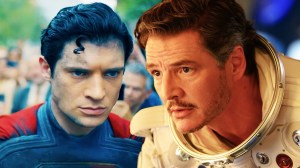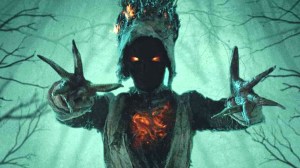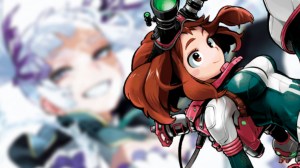
Disney’s The Jungle Book seemed a slightly unlikely film for a live-action remake. The animated classic, after all, was already one of many adaptations of Rudyard Kipling’s tales of a boy who grew up in the Jungle, and it was just that: a classic. In Disney’s recent spate of live-action fairytale films, I really didn’t know what to think of The Jungle Book in the lead-up to the film.
Videos by ComicBook.com
Then came D23 Expo last summer, and the first official footage. When Director Jon Favreau took the stage to introduce the film and some of its actors, he talked about how the entire movie was created on sound stages in Los Angeles, CA. The jungle, the animals, all CGI, using the latest of technologies. Seeing, then, was believing, and seeing it in action in just a brief clip was incredible.
Well, the full film takes that experience and multiplies it exponentially. For the screening, Disney put us in a Dolby Cinema theater, with ATMOS sound, specially designed to help you feel like you’re a part of the film. From the moment the Disney castle logo faded into the distance and the jungle began to emerge in every direction on the screen, it was easy to lose yourself in the majesty. It’s simply the most breathtaking use of CGI ever in a film, and that’s largely because there’s almost nothing in it that ever makes you even think of CGI.
Almost nothing, of course, as yes, these animals do talk, mostly speaking in English. What’s awe-inspiring, however, is the way they move. These animals, entirely the creation of artists, look and behave very much like real beasts of the jungle. The voice cast, from Idris Elba’s booming and terrifying Shere Khan to Bill Murray’s surprisingly endearing and heartfelt performance as Baloo and literally everyone in-between, was so perfectly chosen, it was easy to believe those particular animals could have those voices. It made sense that Bagheera would have the wisdom that Sir Ben Kingsley’s voice intones, and that Kaa’s seductive hypnosis would come at the sound of Scarlett Johansson. The voices coupled with the movements make the viewers simply another part of the story; we don’t have to suspend much disbelief, because it’s just all so easy to believe.
The jungle itself is as much a character in the film as any, and the way it feels so completely alive is breathtaking. Without knowing ahead of time and constantly reminding myself of its true origins, I simply would’ve thought this whole thing was shot in an incredible, lush, old jungle.
But the real standout here is Neel Sethi, the newcomer who played Mowgli. Favreau said Sethi had to film the entire movie twice – once in mocap suits to better serve the action and interaction with the animal characters, and once in costume. Without an incredibly strong human anchor, none of the mysticism of the film would work, and Sethi provides it with an incredible ease. His performance is so natural, with real child-like behavior and response that so often seems forced on the big screen, or is completely dispelled by the director, that you simply feel you’re watching a real boy go through this adventure.
The sense of adventure captured in The Jungle Book is just as astonishing as the visual feats. The film pulls you in from literally the first pan-out shot to the very end. Again, it feels like there’s a force to the jungle itself that moves the adventure along, and even knowing the story (or at least remembering the high points) from the decades-old animated edition, it’s remarkably easy to completely lose yourself in the fun, the excitement, the shock, the nervousness, and really the whole film.
Grade: A
The Jungle Book hits theaters Friday, April 15, 2016.









